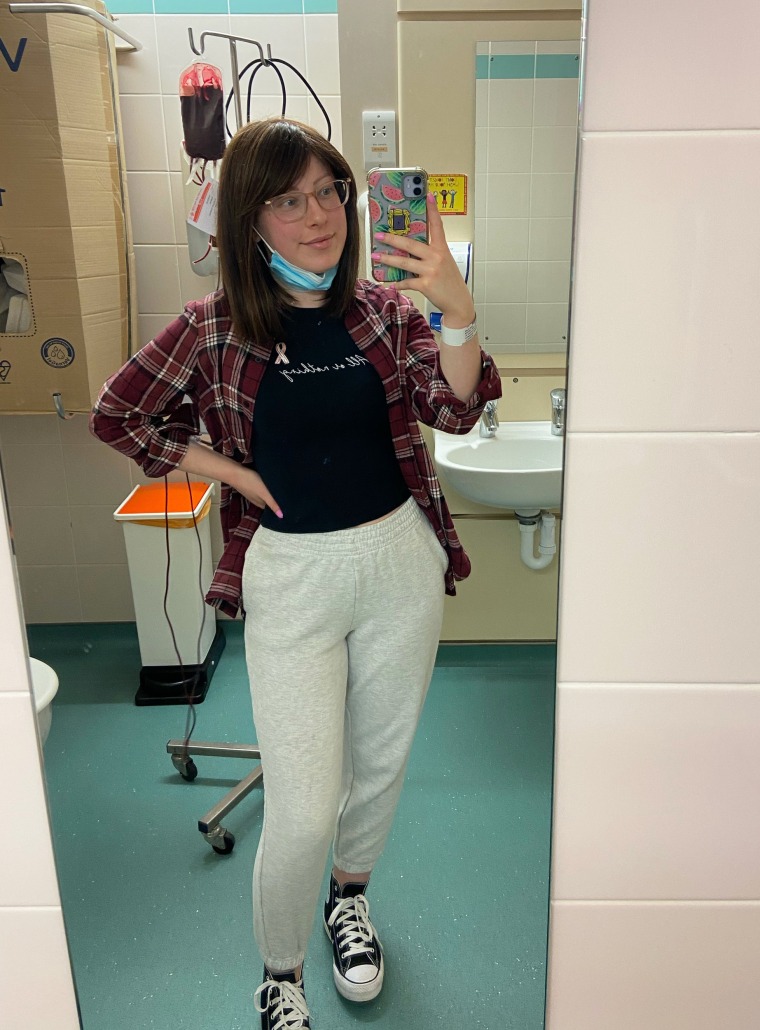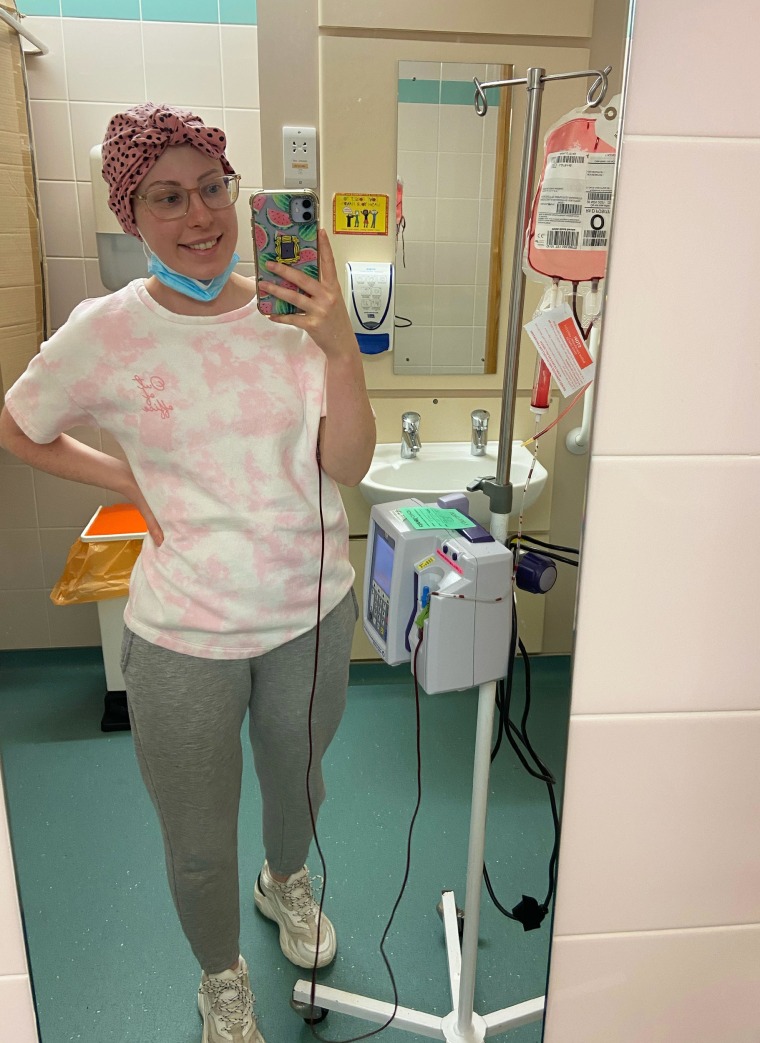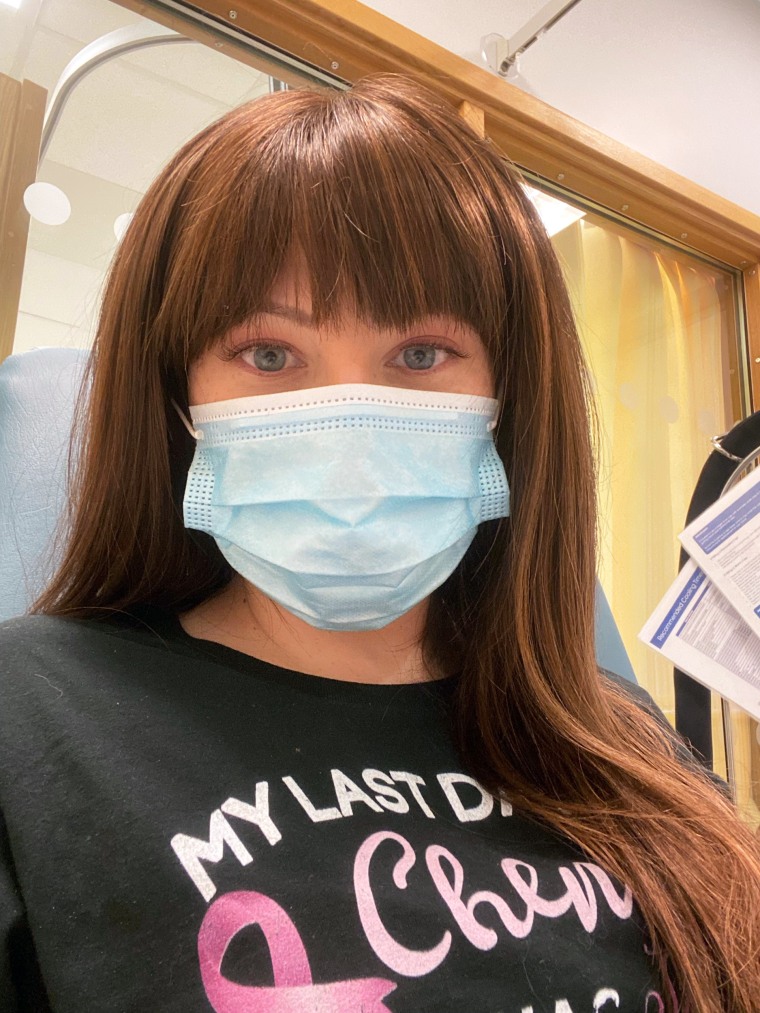In the shower, Siobhan Harrison, 23, felt a lump in her breast. At first, she thought little of it. But as time passed, she worried and visited her doctor.
“When I went to get it checked out, the doctor wasn’t that concerned. And at that point, I wasn’t that concerned,” Harrison, now 25, of Tredegar in North Wales, tells TODAY.com. “But I just needed some reassurance, and then at the same time, I didn’t want to leave it that long.”

After other doctors’ visits and tests, Harrison learned what was caused the bump — she had stage 2 triple negative breast cancer. She felt surprised to have breast cancer at such a young age.
“I was trying to find other people my age,” she says. “I’m obviously glad that I was not bumping into loads of young people. But every time I went to the hospital, I (was) always the youngest. I haven’t really seen anyone my age.”
‘A small lump’ eventually leads to diagnosis
As Harrison showered one day in early 2021, she felt something new in her breast.
“I was just checking my chest in the shower whilst I was washing,” she says. “I felt a very small lump.”
At first, she wasn't concerned. As Harrison thought more about it, she decided to make a doctor’s appointment. Her doctor didn’t think the breast lump was cancer, but agreed to refer Harrison to a hospital for a follow-up ultrasound. The first appointment was nine months away, and Harrison felt concerned about waiting that long.
“Nobody ever mentioned the word cancer to me. It was just mentioned as a fibroadenoma, which is a noncancerous breast lump,” Harrison says. “I still wanted that confirmation.”
As time passed, she fretted over the lump's increasing size.
“I wish I went back to my GP again, so she could see that the lump was growing,” she says. “When it’s on your body and you see it every day, you don’t realize how big it’s getting.”
Harrison opted for a private hospital and not a National Health Service (NHS) facility to undergo her ultrasound quicker. When she met with the private doctor for the consultation, that doctor also thought the lump was not cancerous.
“No one seemed too worried. … No one mentioned cancer,” she says. “I had been through the ultrasound scan, and then they did say (the lump) looked a bit bumpy, so that’s when there was a red flag.”
Doctors wanted to do a biopsy, but the out-of-pocket costs were too great, and she asked if she could return to an NHS hospital. The doctor agreed. A few months later, she underwent a second ultrasound and biopsy and learned what caused the growing mass in her upper right breast.
“They told me that I had cancer,” she says. “Obviously, I was upset.”
Harrison has no family history of breast cancer, and there was “nothing in my genetics” that indicated she would be at risk for it.
Soon after diagnosis, she underwent a lumpectomy to remove the tumor. Then she opted for fertility preservation treatments and had her eggs harvested. Following the surgery, Harrison was cancer-free, but she underwent chemotherapy and radiation to “mop up” any remaining cancer, she recalls.
“I just wanted to get through it,” she says. “It was good in the sense that I had that light at the end of the tunnel.”
At the time, hospitals were worried about COVID-19 spreading and often prohibited family and friends from joining patients.
“I was very isolated, and I never really saw anyone my age (while getting treatment),” she says. “It was difficult.”

Harrison took eight months off work for treatment, which made it easier for her to recover. She was surprised that she gained weight during treatment, but she was taking steroid, which was likely the cause. Almost immediately after starting chemotherapy, she lost her hair. Still, she weathered treatment well.
“I feel like I got off pretty lightly,” she says.
Triple negative breast cancer
Triple negative breast cancer grows and spreads faster than other breast cancers, according to the American Cancer Society. Dr. Arif Kamal, chief patient officer for the ACS, previously told TODAY.com that signs of a quick-growing breast cancer can include:
- A change in the skin over the breast
- A mass not associated with normal changes due to the menstrual cycle
- Abnormal discharge or bleeding from the nipple
"A person knowing their body, talking with their doctors about what changes are worrisome and monitoring for those changes is important to add to a regular cancer screening schedule," Kamal said.
Triple negative breast cancer also tends to have a worse long-term outcome because there are fewer treatment options for it. Triple negative cancer doesn’t carry estrogen or progesterone receptors or make the protein HER2. This means hormone therapy and drugs targeting HER2 are ineffective in treating it.
The go-to treatment for triple negative breast cancer is chemotherapy because it's typically "very responsive" to it, Dr. Amy Tiersten, professor of medicine, hematology and oncology at the Icahn School of Medicine at Mount Sinai and clinical director of breast medical oncology, previously told TODAY.com.
According to Cancer Research U.K., 55,920 women are diagnosed with breast cancer annually in the United Kingdom, making it the most common cancer. Few women in their 20s develop breast cancer, and the incidence increases with in each decade in life, the organization noted. That said, triple negative breast cancer is more likely to occur in younger patients, per the ACS.
Recovering from cancer
Harrison returned to working and resumed life as usual.
“People say, ‘How did you do it?’ But at the same time, I had no other choice,” she says. “When you’re confronted with something as big as this, you just take it day by day.”

“Life after cancer has been the hardest part because you’ve been thrown back into your normal life with all this traumatic stuff that happened to you,” Harrison continues. “I do obviously live with the fear of it coming back.”
She experiences some bone and joint pain, likely a side effect from the treatments, but her hair is growing back, and she has enough energy to take short walks. Harrison will need to undergo a yearly mammogram to make sure her cancer has not returned.
She shared her story to encourage others to advocate for their health.
Post a Comment